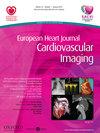Artificial intelligence-based point-of-care lung ultrasound for screening Covid-19 pneumoniae: comparison with CT scans
引用次数: 0
Abstract
Abstract Funding Acknowledgements Type of funding sources: None. Background Although lung ultrasound has been reported to be a portable, cost-effective, and accurate method to detect pneumonia, it has not been widely used because of the difficulty in its interpretation. Purpose We aimed to investigate the effectiveness of a novel artificial intelligence-based automated pneumonia detection method using point-of-care lung ultrasound (AI-POCUS) for the coronavirus disease 2019 (COVID-19). Methods We enrolled consecutive patients admitted with COVID-19 who underwent computed tomography (CT) in August and September 2021. A 12-zone AI-POCUS was performed by a novice observer using a pocket-size device within 24 h of the CT scan. Fifteen control subjects were also scanned. Additionally, the accuracy of the simplified 8-zone scan excluding the dorsal chest, was assessed. More than three B-lines detected in one lung zone were considered zone-level positive, and the presence of positive AI-POCUS in any lung zone was considered patient-level positive. The sample size calculation was not performed given the retrospective all-comer nature of the study. Results A total of 577 lung zones from 56 subjects (59.4 ± 14.8 years, 23% female) were evaluated using AI-POCUS. The mean number of days from disease onset was 9, and 14% of patients were under mechanical ventilation. The CT-validated pneumonia was seen in 71.4% of patients at total 577 lung zones (53.3%). The 12-zone AI-POCUS for detecting CT-validated pneumonia in the patient-level showed the accuracy of 94.5% (85.1% – 98.1%), sensitivity of 92.3% (79.7% – 97.3%), specificity of 100% (80.6% – 100%), positive predictive value of 95.0% (89.6% − 97.7%), and Kappa of 0.33 (0.27 – 0.40). When simplified with 8-zone scan, the accuracy, sensitivity, and sensitivity were 83.9% (72.2% – 91.3%), 77.5% (62.5% – 87.7%), and 100% (80.6% – 100%), respectively. The zone-level accuracy, sensitivity, and specificity of AI-POCUS were 65.3% (61.4% – 69.1%), 37.2% (32.0% – 42.7%), and 97.8 % (95.2% – 99.0%), respectively. Conclusion AI-POCUS using the novel pocket-size ultrasound system showed excellent agreement with CT-validated COVID-19 pneumonia, even when used by a novice observer.基于人工智能的即时肺部超声筛查Covid-19肺炎:与CT扫描的比较
资金来源类型:无。背景:尽管肺部超声被认为是一种便携、经济、准确的肺炎检测方法,但由于其解释困难,尚未得到广泛应用。目的探讨一种基于人工智能的新型肺炎自动检测方法——即时肺超声(AI-POCUS)对2019冠状病毒病(COVID-19)的有效性。方法我们招募了于2021年8月和9月接受计算机断层扫描(CT)的连续COVID-19患者。在CT扫描后24小时内,由一名新手观察员使用口袋大小的设备进行了12区AI-POCUS。同时对15名对照受试者进行扫描。此外,还评估了除胸背外的简化8区扫描的准确性。在一个肺区检测到3个以上b线被认为是区域水平阳性,在任何肺区存在阳性AI-POCUS被认为是患者水平阳性。考虑到该研究的回顾性,没有进行样本量计算。结果应用AI-POCUS对56例患者(59.4±14.8岁,女性23%)共577个肺区进行评价。平均发病天数为9天,14%的患者采用机械通气。ct证实的肺炎在577个肺区中占71.4%(53.3%)。12区AI-POCUS在患者水平检测ct验证肺炎的准确率为94.5%(85.1% ~ 98.1%),灵敏度为92.3%(79.7% ~ 97.3%),特异性为100%(80.6% ~ 100%),阳性预测值为95.0% (89.6% ~ 97.7%),Kappa为0.33(0.27 ~ 0.40)。8区扫描简化后,准确度为83.9%(72.2% ~ 91.3%),灵敏度为77.5%(62.5% ~ 87.7%),灵敏度为100%(80.6% ~ 100%)。AI-POCUS的准确度、灵敏度和特异性分别为65.3%(61.4% ~ 69.1%)、37.2%(32.0% ~ 42.7%)和97.8%(95.2% ~ 99.0%)。结论使用新型口袋大小超声系统的AI-POCUS与ct验证的COVID-19肺炎具有良好的一致性,即使是新手观察者也可以使用。
本文章由计算机程序翻译,如有差异,请以英文原文为准。
求助全文
约1分钟内获得全文
求助全文

 求助内容:
求助内容: 应助结果提醒方式:
应助结果提醒方式:


